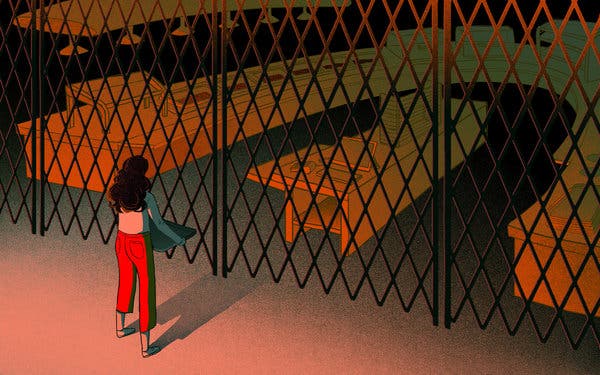|
The Supplemental Nutrition Assistance Program, or SNAP, feeds the impoverished population of the United States. Formerly known as food stamps, SNAP allocates money to people who cannot support themselves well enough to buy their own food. The program is utilized by over 42 million people per year. SNAP can be administered to many different types of people, including those who work low income jobs, are unemployed, those with disabilities, and the homeless (SNAP-Eligible Households 1). A report summary from the Economic Research Service that was released by the United States Department of Agriculture identified a cluster of design flaws that show that SNAP is not the best possible version of itself. Evidence of decline in SNAP success was found when the study examined major policies of the program and their flaws (Oliveira et al. 2). Since the program supplies for so many people, it is vital that the program thrives. So, what can we do to improve the effectiveness of SNAP? It is going to require changes to all aspects of the program. In order to improve the effectiveness of SNAP, there must be a new balance within the policies regarding eligibility, a redirection of government funds so that the program receives the money it needs to provide, and a nutrition filtering system that regulates the types of specific products that can be bought, but does not exclude certain stores.
There are variations within the participant eligibility standards that do not rationally determine who can get SNAP help. Many variables contribute to the issues with SNAP’s acceptance system, including state governments having control over their usage of the broad-based categorical eligibility, meaning they can choose if the eligibility system will look at non-cash means-tested programs beyond the traditional asset tests or gross income evaluations. The goal of this is to promote participation in SNAP, but the issue with this policy is that higher income people have been able to slip into the program and it raises the overall program costs (Oliveira et al. 3). Impoverished people of the United States must have equal and consistent access to SNAP in order for it to be labeled as functional. The program must be beneficial to all of those seeking financial support that need it, not just a select few. As of now, SNAP has a semi-loose set of requirements for eligibility, which can mean that people with high incomes are qualifying, hogging funds from those who are not being paid as much and need help paying for food. Sonny Perdue, the US Secretary of Agriculture (the group who oversees the program) is in favor of altering the current SNAP system. His belief is that people “expect their government to be fair, efficient, and to have integrity-” He gets behind the change from his former USDA hired stance because change will “prevent abuse of a critical safety net system, so those who need food assistance the most are the only ones who receive it.” (Vu 2). Perdue is fit to evaluate SNAP’s effectiveness because he is well informed regarding food and pricing. Another conflict within the eligibility is that children and adults are being grouped together and tested on their eligibility for SNAP, causing a hole in the programs fairness. On one hand, the current policies let stable people in and shut others out, but on the other, a rule proposed by the Trump Administration proves that making the program stricter could be just as problematic. The rule would more heavily test those hoping to get into SNAP, but it would then be applied to the youth. If the government looks at wages, these kids will be shut out because they do not work yet. Perdue took his stance after the Trump Administration proposed said change, which was a new rule that intensified the requirements for getting into SNAP. The rule would outlaw automatic acceptance to SNAP for people already receiving state and/or federal financial assistance. This would mean that heavier evaluation would be done, which is a benefit of this change. Some aspects of the new rule put children at a disadvantage. If it were to be passed, around 500,000 students would lose access to SNAP (Vu 2). So, there must be a mixture of the two that would keep wealthy people out through evaluation while also not isolating children from eligibility. The system for eligibility testing must be more precise, not harsher or more lenient. Even if the eligibility system were to be flawless, SNAP lacks the funds it needs to be truly effective. If the US set aside more money for the program, there would be less people that go hungry. Money must be taken from an over funded organization like the military. With its budget already approaching 718 million dollars in 2020 according to the Congressional Budget Office, who analyze economic and budgetary issues in the US, the military is draining the country’s funds that could be benefiting the people better directly, specifically those who really need it, the hungry (Long-Term Implications of the 2020 Future Years Defense Program 2). Even James N. Miller, former Under Secretary for Defense for Policy, and Michael E. O’Hanlon, director of research in Foreign Policy at the Brookings Institution where he specializes in U.S. defense strategy, the use of military force, and American national security policy, agree that the military does not need that much money. They do not doubt that the Pentagon will put the money to good use, but they said that in some instances, “it makes no sense under a strategy focused on China and Russia to grow the force overall.”, meaning that the money has potential for technological proliferation but that they don’t need the excess money to grow the force (Miller and O’Hanlon). The money should instead go to SNAP to help people of the general population instead of the population of those fighting for our military. Becoming eligible for SNAP is one thing, but having success within the program is another. Steven Carlson, research analyst who previously directed Office of Policy Support at the Agriculture Department’s Food and Nutrition Service, argues, “SNAP benefits fall short of what many participants need to purchase and prepare a healthy diet and that additional benefits would increase food expenditures and improve food security.” Carlson goes on to list off the current issues caused by lack of funding, the most worrisome being that families cannot even make it through the month. In fact, he found that, “a quarter of all households exhaust their benefits within a week of receipt, and more than half exhaust benefits within the first two weeks.” Most households end up having to focus their own earned money on food, defeating the purpose of SNAP completely (Carlson 3). Families on SNAP need more funding so they can lead healthy lives and focus their money on other things outside of the program. SNAP could be improved with the previously provided ideas, but in order to connect the puzzle and actually perfect the effectiveness so that all of those in need are provided for, the program also needs to make sure the people are healthy. The cheapest meals happen to be unhealthy. In fact, Harvard conducted a study in which it was discovered that eating healthy is significantly pricier than buying unhealthy alternatives. Experts from the Harvard School of Public Health conclude that, “...healthier diet patterns...cost significantly more than unhealthy diets...On average, a day’s worth of the healthiest diet patterns cost about $1.50 more per day than the least healthy ones.” This ends up being about $550 extra per year. (Mozaffarian et al. 3). Understandably so, people on SNAP tend to turn to unhealthier foods. Children on SNAP are significantly more likely to be overweight or even clinically obese because of the prices on the food they can buy. The New York College of Pediatric Medicine ran many tests to narrow down the correlation between SNAP and obesity. For one, SNAP-eligible children who got SNAP in the last month were more likely to drink soda than those who did not receive benefits (Researchers at New York College of Pediatric Medicine Target Obesity 2). A health editor named Jessica Firger wrote an article where it was discovered that bottled water prices grew higher than sugar-sweetened beverage prices. It would not be rational to demand higher pricing on the items, so the United States must regulate the food that can be bought on SNAP funding (Firger 2). However, the means of filtration of what foods can be bought with SNAP cannot also be restrictive of what stores people can shop at. The study by the USDA that was already mentioned shows that SNAP participation drops due to accessibility when certain stores do not meet the health standards (Oliveira et al. 4) Instead of excluding certain stores from the program, SNAP must put restrictions on which products can be bought specifically. If these improvements were made, they would combine to make SNAP an extremely helpful program. It would include the right people, have sufficient funds, and also would keep people eating healthy foods. With so many people in need of SNAP in the United States, the people must come together to mend the program in order to better the lives of our impoverished population. Through strong petitions and articles depicting the current issues, the USDA and government will have no choice but to alter SNAP. It seems impossible for citizens to make such large changes, and a single person will not start a revolution. However, there is strength in numbers. Convincing the people in charge that we are willing to make change is enough to influence them to make it. The people of the US must fight for the poor and combat poverty. Sources: Carlson, Steven. “More Adequate SNAP Benefits Would Help Millions of Participants Better Afford Food.” Center on Budget and Policy Priorities, 30 July 2019, https://www.cbpp.org/research/food-assistance/more-adequate-snap-benefits-would-help-millions-of-participants-better. Firger, Jessica. “Soda and Other Sugary Beverages Are Getting Cheaper Worldwide-Posing Severe Health Risks.” Newsweek, 25 May 2017, https://www.newsweek.com/2017/06/02/sugar-sweetened-beverages-soda-cheaper-obesity-cancer-diabetes-594827.html. “Long-Term Implications of the 2020 Future Years Defense Program.” Congressional Budget Office, 9 Aug. 2019, https://www.cbo.gov/publication/55500. Mozaffarian, Dariush, Rao, Mayuree, Afshin, Ashkan, Singh, Gitanjali. “Do Healthier Foods and Diet Patterns Cost More Than Less Healthy Options? A Systematic Review and Meta-Analysis,” BMJ Open, December 5, 2013 Oliveira, Victor, Prell, Mark, Tiehen, Laura, and Smallwood, David. Design Issues in USDA’s Supplemental Nutrition Assistance Program: Looking Ahead by Looking Back, ERR-243, U.S. Department of Agriculture, Economic Research Service, January 2018. “Researchers at New York College of Podiatric Medicine Target Obesity (Consumption of Sugar-Sweetened Beverages and Obesity in SNAP-Eligible Children and Adolescents).” Obesity, Fitness & Wellness Week, NewsRX LLC, 14 Sept. 2019, https://go.gale.com/ps/i.do?p=GPS&u=mlin_s_weyhs&id=GALE|A598749851&v=2.1&it=r&sid=GPS&ugroup=outside. “SNAP-Eligible Households.” Hunger and Health, Feeding America, 2019, https://hungerandhealth.feedingamerica.org/explore-our-work/programs-target-populations/snap-eligible-households/. Vu, Nancy. "Trump Food Stamp Policy Could Cut Free Lunch For Half A Million Students." UWIRE Text, 11 Oct. 2019, p. 1. Gale General OneFile, https://link.gale.com/apps/doc/A602355419/GPS?u=mlin_s_weyhs&sid=GPS&xid=c2d38e2f. Accessed 20 Oct. 2019.
0 Comments
Your comment will be posted after it is approved.
Leave a Reply. |
WHS StudentsThe Journal of Scholarship at WHS is a peer reviewed journal publishing academic works by emerging scholars at Weymouth Middle and High School. Archives
May 2024
Categories
All
|


 RSS Feed
RSS Feed
